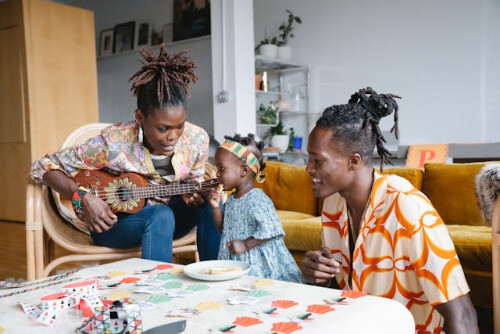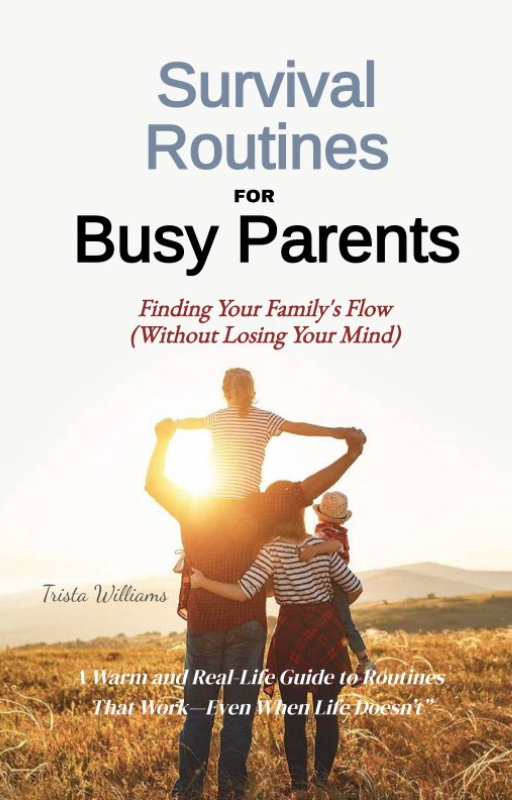How to Break the Cycle of Bad Parenting: A Step-by-Step Guide to Positive Change
For many parents, we are shaped by the examples we grew up with. Sometimes that means repeating patterns that we swore we’d never carry forward. Let’s talk about how to break the cycle of bad parenting and replace harmful habits with ones that build strong, healthy relationships with your kids.

Step 1: Acknowledge Without Shame
The first step is self-awareness—recognizing harmful behaviors without beating yourself up.
Bad parenting isn’t always intentional. It’s often the result of stress, lack of tools, or learned habits. Shame can make you defensive, but self-compassion keeps you open to change.
Pro Tip:
Instead of saying, “I’m a terrible parent,” try, “I’ve recognized a behavior I want to change, and that means I’m growing.”
Step 2: Identify Your Specific Patterns
Vague intentions like “I want to be a better parent” are harder to follow through on than concrete goals. Think about moments where interactions with your child left you feeling guilty, regretful, or frustrated.
Common patterns include:
- Interrupting instead of listening
- Using shame or criticism as a default response
- Withdrawing affection when upset
- Overprotecting to avoid discomfort
Write these down in a journal. Seeing them in black and white makes them easier to track and change.
Step 3: Learn New Parenting Tools
You can’t simply “stop” bad parenting habits—you need to replace them with better ones.
Invest time in reading, attending workshops, or following credible parenting experts online.
Examples of positive tools:
- Active listening: Let your child fully express themselves before responding.
- Natural consequences: Let real-life outcomes teach lessons instead of relying solely on punishment.
- Positive reinforcement: Catch them doing something right and acknowledge it.
Expert Insight:
Dr. Laura Markham, clinical psychologist, says: “Children thrive when parents connect before they correct. Emotional safety fosters cooperation.”
Step 4: Practice Consistent Communication
Children notice when your words and actions align. Clear, respectful communication builds trust and shows them how to communicate in their own relationships.
Try this shift:
- Instead of: “Because I said so.”
- Say: “I need you to help clean up because we all share this space.”
It’s a small change, but it helps kids feel respected and heard—two things often missing in bad parenting cycles.
Step 5: Repair When You Slip
Breaking habits takes time. You will slip up. The difference between staying in the cycle and breaking it is repair.
If you yelled, ignored, or reacted harshly, circle back:
- Apologize: “I shouldn’t have raised my voice. I was frustrated, but that’s not your fault.”
- Reconnect: Offer a hug, a game, or time together to re-establish closeness.

This not only repairs trust but also teaches your child that mistakes are normal and can be fixed.
Step 6: Set Boundaries for Yourself
Some bad parenting patterns come from burnout.
Make sure you have boundaries that protect your mental and emotional energy.
- Say no to over committing your time
- Build in moments of quiet or hobbies that recharge you
- Reach out for help—friends, family, or a therapist
Remember: a calmer, more grounded parent reacts with patience instead of frustration.
Step 7: Surround Yourself With Positive Examples
If everyone around you uses harsh discipline, mocks kids’ feelings, or believes children should be “seen and not heard,” it will be harder to change. Seek out people who model respectful, balanced parenting.
You can find this community in:
- Parenting support groups (in-person or online)
- Books and podcasts from evidence-based sources
- Counseling or group therapy
The more positive examples you see, the easier it is to internalize new patterns.
Step 8: Heal Your Own Inner Child
Oftentimes when you break the cycle of bad parenting you are changing what you do—it’s about healing what happened to you. If you grew up feeling unloved, unheard, or unsafe, those wounds can show up in how you parent.
You might want to talk to a specialist in childhood trauma or family systems. While healing, you will find yourself becoming more patient, compassionate and secure —so does your parenting.
Why Breaking the Cycle Matters

When you change harmful parenting patterns, you’re not just improving your relationship with your child—you’re shaping how they’ll treat others, parent their own children, and move through life.
Long-term benefits include:
- Stronger emotional resilience in your kids
- Healthier self-esteem and confidence
- Better communication and conflict resolution skills
- Reduced risk of anxiety, depression, or relationship difficulties
Think of it this way: by breaking the cycle, you’re not just changing one life—you’re influencing generations.
Quick Self-Assessment Checklist
Use this as a weekly reflection tool:
- Did I listen to my child without interrupting?
- Did I use more encouragement than criticism?
- Did I model the behavior I want to see?
- Did I apologize when I made a mistake?
- Did I take time for my own well-being?
Break the Cycle of Bad Parenting - Final Thoughts
To break the cycle of bad parenting you are progressing. Every time you choose to pause instead of snap, to listen instead of dismiss, to connect instead of withdraw, you’re rewriting your family’s story.
Your children don’t need you to be flawless. They need you to be aware, present, and willing to grow alongside them. And the best part? It’s never too late to start.
Psychology Behind Bad Parenting















New! Comments
Have your say about what you just read! Leave me a comment in the box below.